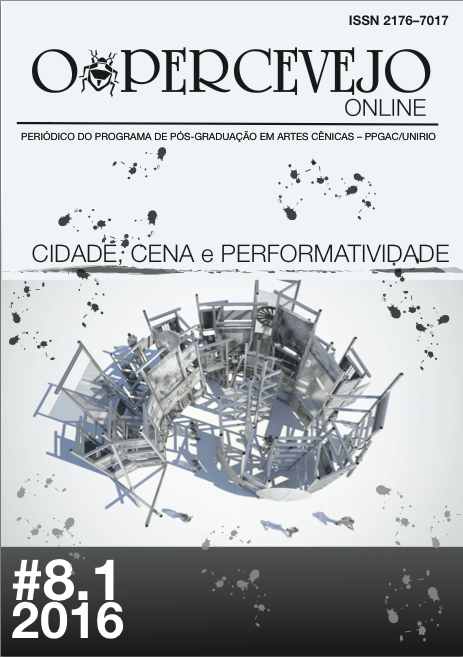ARQUITETURA E CENOGRAFIA NA REPRESENTAÇÃO DO BRASIL PAVILHÕES BRASILEIROS DE LONDRES A MILÃO
DOI:
https://doi.org/10.9789/2176-7017.2016.v8i1.P.%2031-53Resumo
RESUMO Este artigo faz uma revisão dos pavilhões brasileiros nas grandes exposições internacionais, desde seu início, em meados do século XIX. Inicialmente representado através da linguagem eclética europeizante, o Brasil encontra sua primeira manifestação original no estilo neocolonial e, logo após, com o “primeiro estilo nacional moderno”, no pavilhão de Lúcio Costa e Niemeyer para a Feira Mundial de Nova Iorque, em 1939. Desde então, passando por Sergio Bernardes (Bruxelas 1958) e por Paulo Mendes da Rocha (Osaka 1970), os pavilhões tem sido um campo privilegiado do pensamento sobre a cultura brasileira através da arquitetura. O pavilhão de Arthur Casas e Marko Brajovic para a Expo Milão 2015 demonstra a permanência de alguns conceitos que permeiam esta história. Palavras-chave: Exposições Internacionais; Pavilhões brasileiros; representação nacional. ABSTRACT This article reviews the Brazilian pavilions in International Exhibitions, since its beginning in the mid-nineteenth century. Represented initially by European eclectic language, Brazil had his first original manifestation in neocolonial style, and soon after, with the “first modern national style,” the pavilion by Costa and Niemeyer for the New York World Fair (1939). Since then, passing by Sergio Bernardes (Brussels 1958) and Paulo Mendes da Rocha (Osaka 1970), the pavilions have been privileged objects to think about Brazilian culture through architecture. The Arthur Casas and Marko Brajovic pavilion for Expo Milan 2015 demonstrates the permanence of some concepts that permeate this story. Keywords: International Exhibitions; Brazilian Pavilions; National RepresentationDownloads
Não há dados estatísticos.
Downloads
Publicado
2016-07-02
Como Citar
Drago, N. D. (2016). ARQUITETURA E CENOGRAFIA NA REPRESENTAÇÃO DO BRASIL PAVILHÕES BRASILEIROS DE LONDRES A MILÃO. O Percevejo Online, 8(1), 31–53. https://doi.org/10.9789/2176-7017.2016.v8i1.P. 31-53
Edição
Seção
Dossiê Cidade, Cena e a Performatividade


